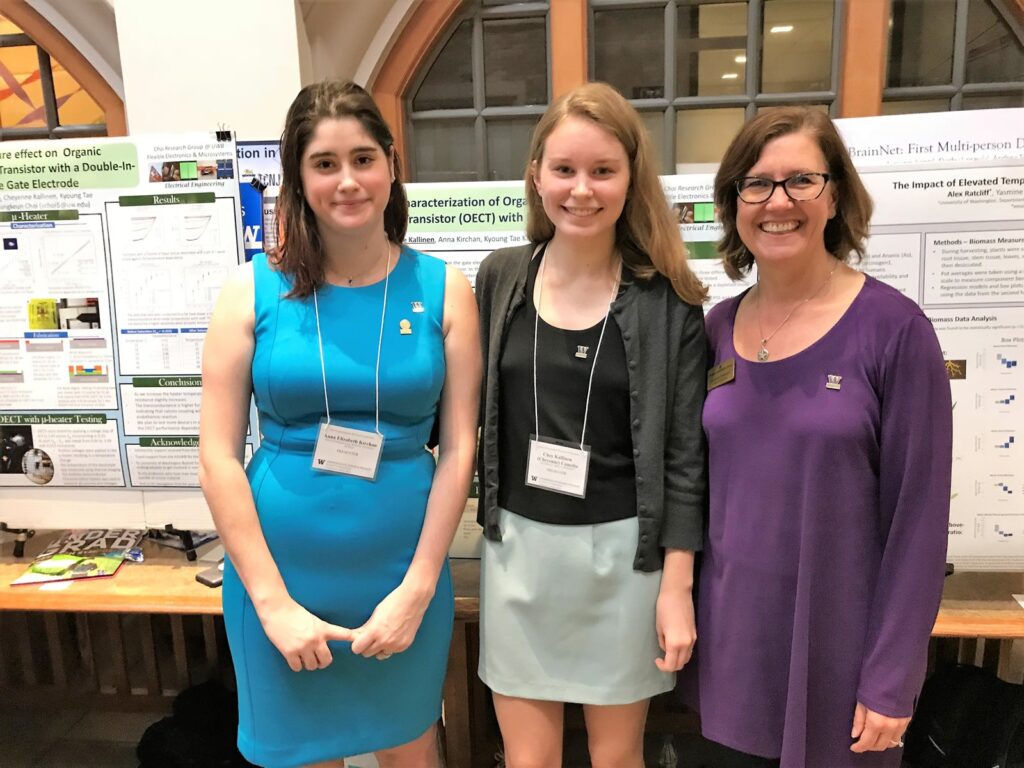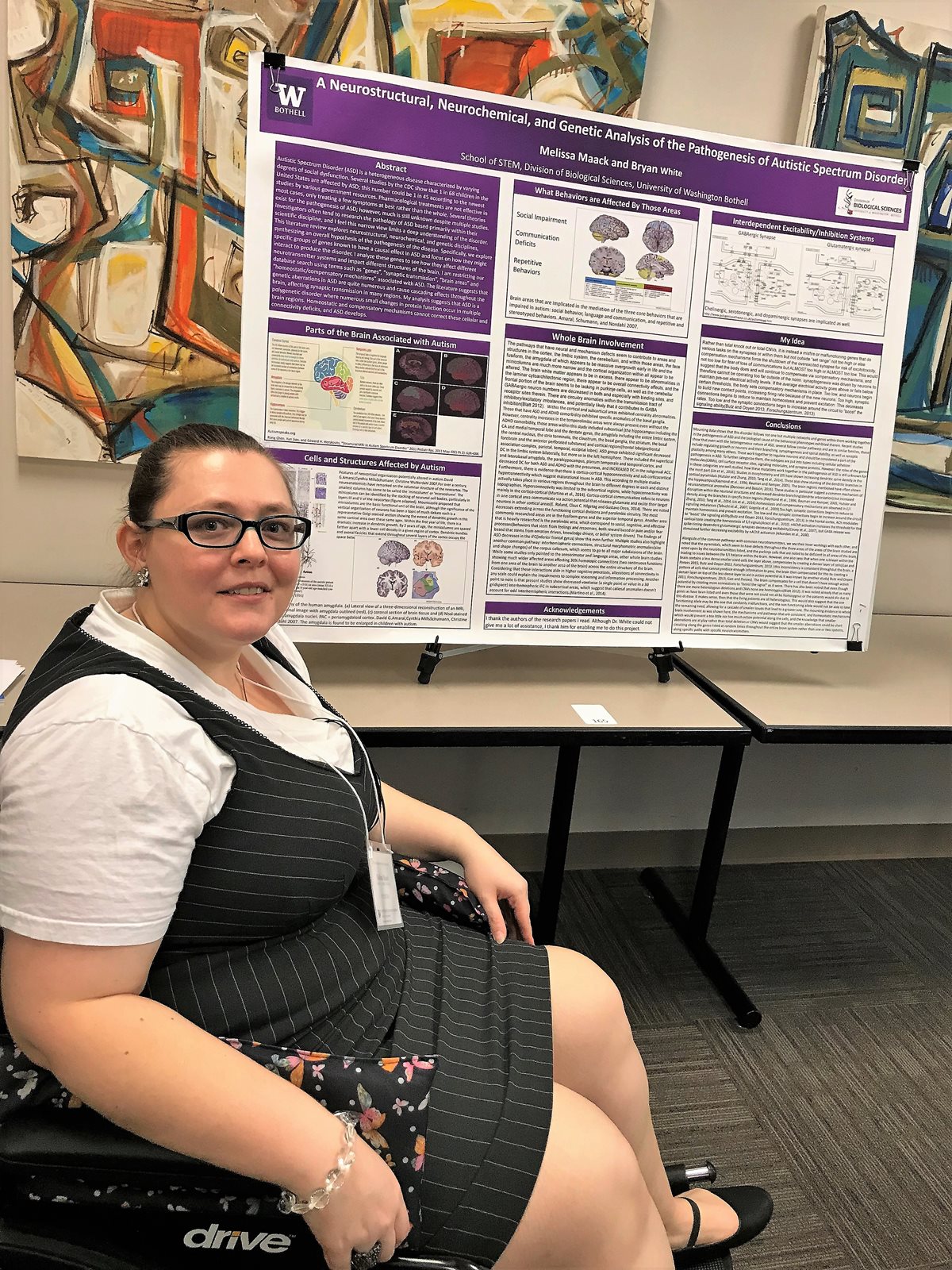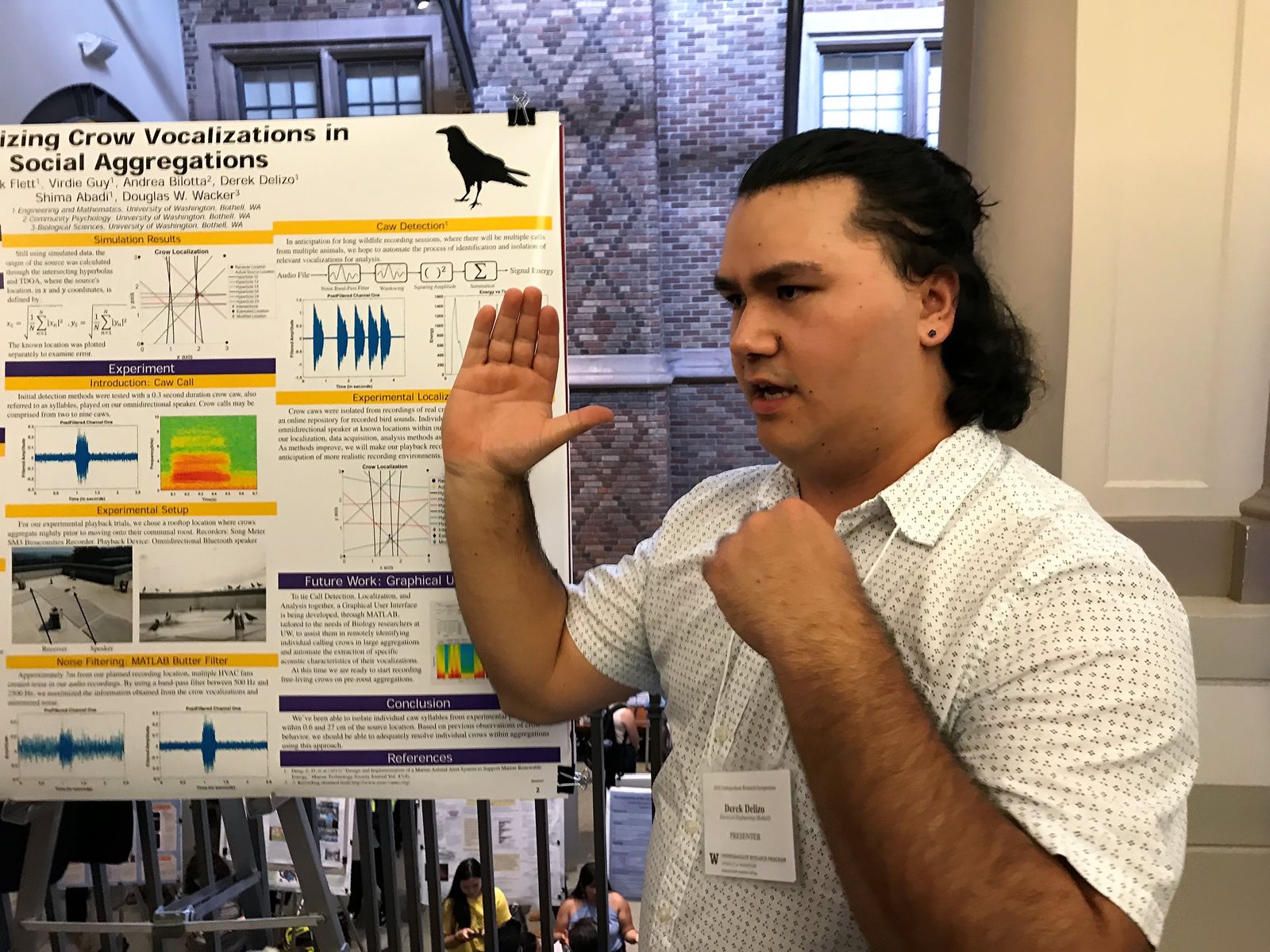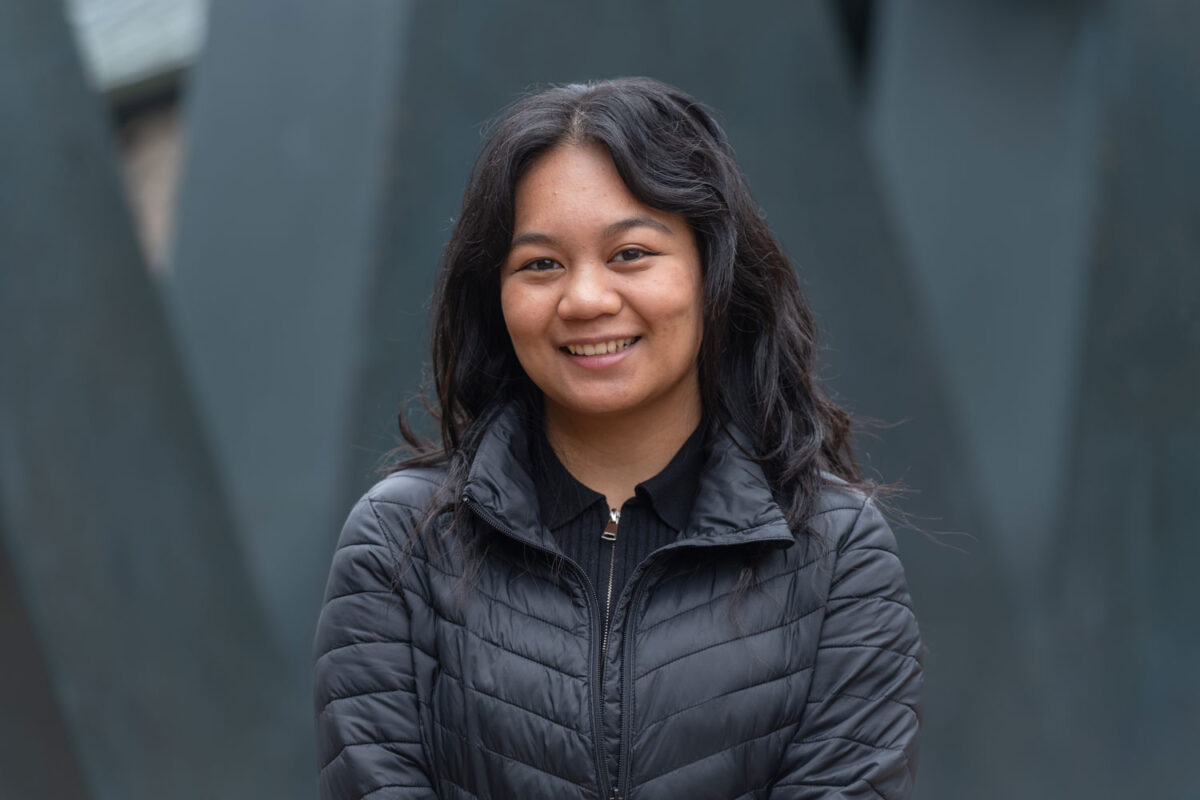
By Douglas Esser
University of Washington Bothell students presented posters or talks on more than 50 projects at the 2018 UW Undergraduate Research Symposium.
UW Bothell posters on organic electrochemical transistors, the autistic spectrum disorder and campus crow vocalizations were among hundreds of research projects from all three UW campuses that were celebrated May 18 in Mary Gates Hall in Seattle.
It was one day that was two or three years in the making, UW President Ana Mari Cauce told the young researchers in welcoming remarks.
Students “are motivated by these research questions that spur their course of study and the discovery of new knowledge,” said Carolyn Brennan, UW Bothell’s assistant vice chancellor for research. “It is inspiring to see them succeed in finding a mentor and collaborating with other students.”

Camelio, a junior in electrical engineering, has been fabricating transistors and testing chemicals, trying to improve the current flow through the device. An organic electrochemical transistor might be used to measure glucose in a diabetic’s saliva rather than blood, she said. Her poster was titled Characterization of Organic Electrochemical Transistor with Nafion.
Anna Kirchan, a dual major in Electrical Engineering and Chemistry who graduates this summer, has been testing a similar transistor with a heater. Her poster was titled Temperature Effect on Organic Electrochemical Transistor.
“Ideally, these transistors will be biocompatible so they can be implanted in more complex devices that would go into a human body,” said Kirchan, a Mary Gates scholar. One possible use, she noted, might be to screen for cancer.

“He told me, ‘Mommy, one day I want to be normal.’ So that killed me as a parent,” Maack said.
Maack compares an autistic brain to a lamp flickering with a short circuit. A former pharmacy tech, she hopes to find a widely accessible treatment that keeps the light on.
Bryan White, a senior lecturer in the School of Interdisciplinary Arts & Sciences, is the mentor for her project, titled, A Neurostructural, Neurochemical and Genetic Analysis of the Pathogenesis of Autistic Spectrum Disorder.

The engineering students have been involved on the technical side of the recordings. Biology students are trying to identify what the crows might be communicating, DeLizo said. The research is an opportunity to apply school learning to a real-world situation — “a big opportunity to explore,” he said.



